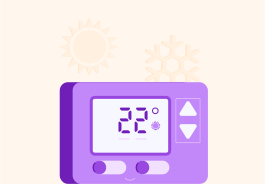YOU ARE LEARNING:
The Skin

The Skin
We will explore the thermoregulatory function of the skin.
The body is able to maintain a relatively constant temperature. What do you think this ability is known as?

The body's temperature is kept constant due to a ________ system that brings the temperature back to normal.

The body's temperature stays relatively constant (around 37 °C) despite changes in the environment. This is thermoregulation. If your temperature rises or falls too much, enzymes can't work properly and that could get very dangerous! Negative feedback mechanisms and the skin are super important for thermoregulation.
The skin acts as a receptor in thermoregulation. How do you think it does that?

The two main layers of the skin are the "epidermis" near the surface and the "dermis" underneath.
Temperature receptors in these layers detect the temperature and send the information to the hypothalamus, which contains the thermoregulatory centre.

How do you think the hypothalamus monitors the body's temperature? Choose two correct answers.

You can select multiple answers
So the thermoregulatory centre receives information from skin receptors about temperature. It also detects the temperature of blood flowing through the brain. It can then initiate a negative feedback response that returns the body's temperature to normal.
What do you think happens if your body's temperature increases?

The hypothalamus automatically responds to changes in the body's temperature. If the body becomes too cold, effectors help the body keep more heat. If the body becomes too hot, effectors help the body lose more heat so it cools down.
